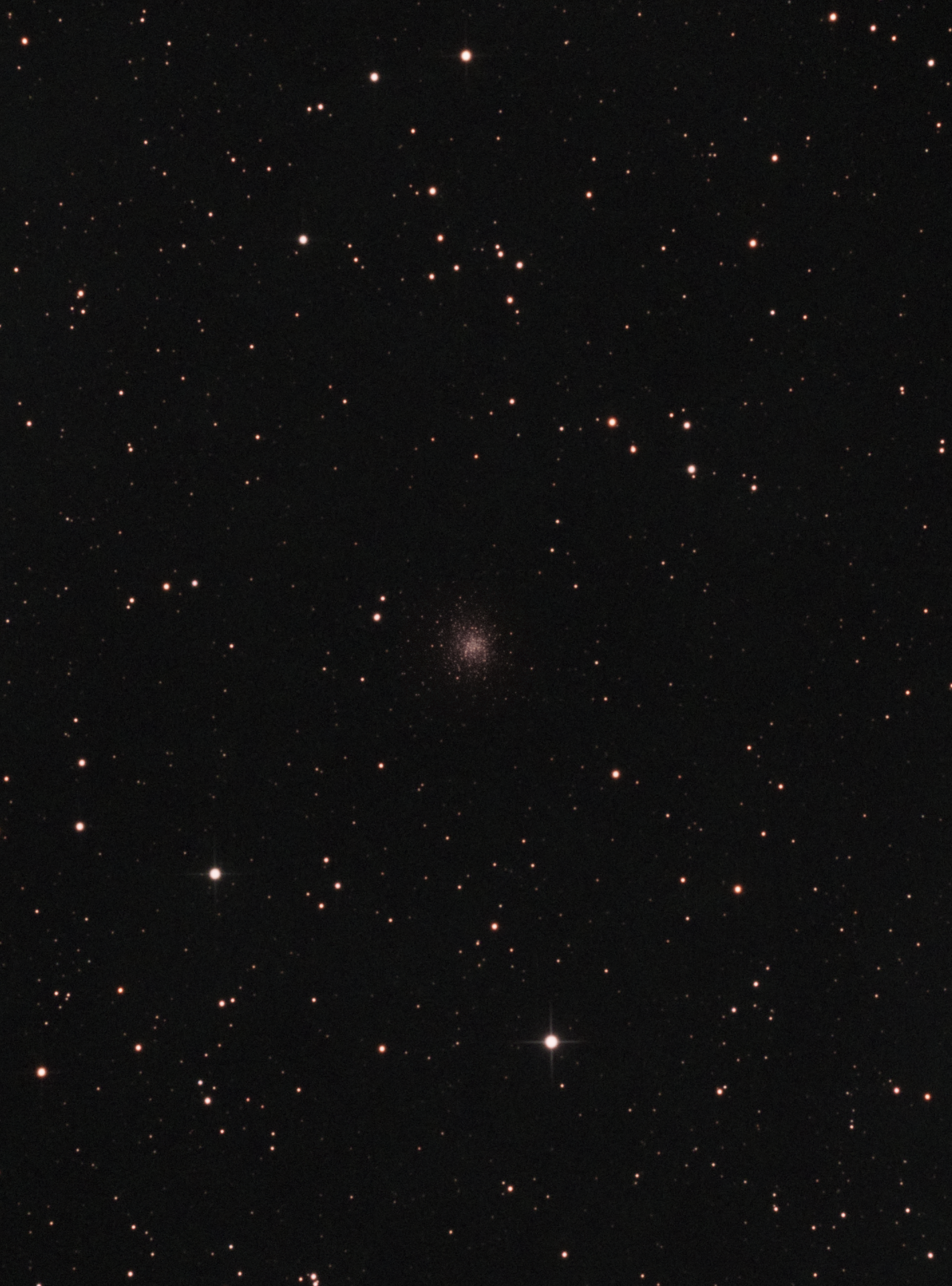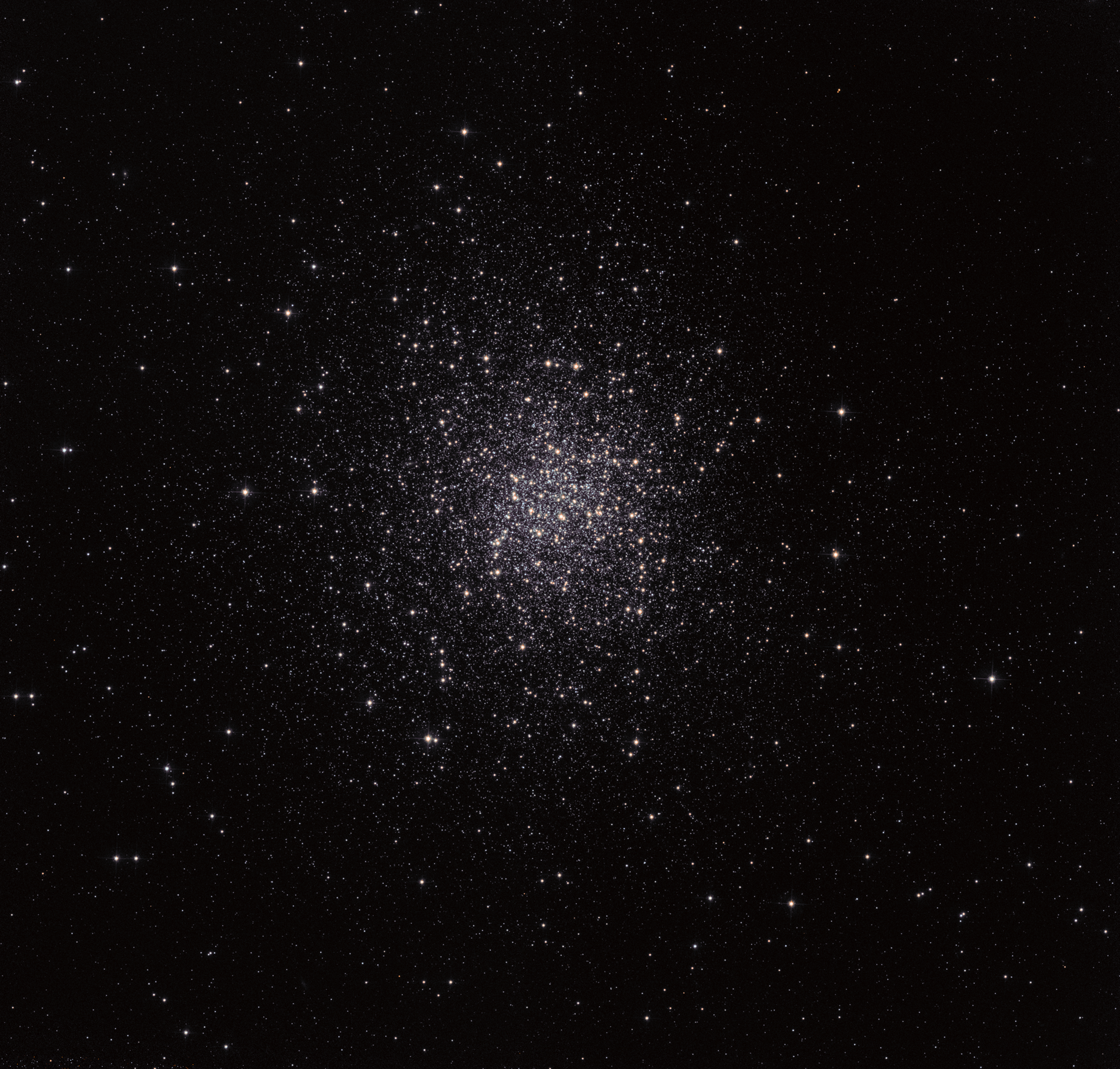Palomar 2 is 34 kiloparsecs from the galactic center, one of the most far-flung globular clusters. That makes it about 26 kpc (+-4) from us (about 85,000 light years). That is why Pal 2 looks so small.
Another obstacle makes Pal 2 hard to study: the cluster sits behind a cloud of dust, and the cloud is not uniform but covers different parts of the cluster differently. The cloud makes it hard to obtain reliable star magnitudes. A 2020 study (Bonatto & Chies-Santos) says the cloud "leads to severe photometric scattering related to differential reddening." 2689. But the study heroically sorts through Hubble data to reach an informed estimate of the cluster's distance. (The study also gives the best current color-magnitude diagram for Pal 2.)
The same study at 2693 posits that Pal 2 contains 140,000 stars. Too bad it's so far away. It would be stunning to see it close up.
This image is 21x900" with the Atik 460EXC through the 203mm Synta ONTC Newtonian at f/4.9 using an Astronomik CLS filter.
But---there is Hubble data, as the study says, so I went to Hubble's Legacy Archives and fetched it. It was taken in deep red and broadband, so the colors below are just a good guess. Once I had the Hubble data, I figured, hey, why not add it to my image? So here first is my image with the Hubble data added in---my collaboration with the Hubble on Pal 2. You can see the stars are a lot brighter. I can reach mag 20 from my backyard in one night, but the Hubble data goes down to mag 25 or so. Adding this to my data makes the cluster a lot brighter, though shrinking the Hubble scale to fit my images more or less means that that data shows only the brighter stars and clumps, so the Hubble data does not really add stars to my data as much as it makes everything brighter.
And here is my version of the Hubble data from the Hubble Legacy Archives:


